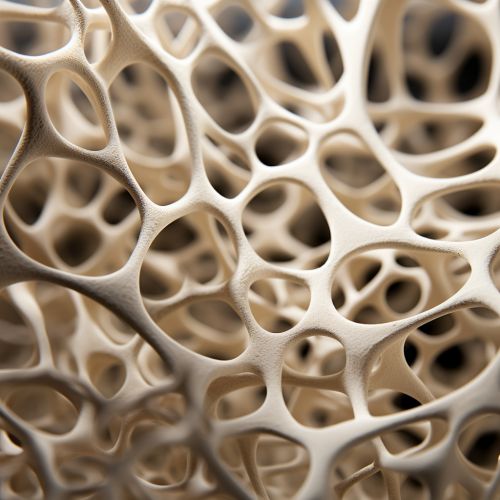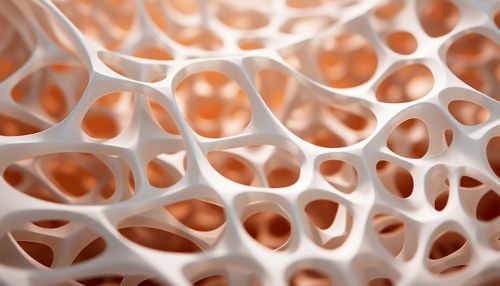Biomaterials
Introduction
Biomaterials are substances that have been engineered to interact with biological systems for a medical purpose - either a therapeutic (treat, augment, repair or replace a tissue function of the body) or a diagnostic one. As a science, biomaterials is about fifty years old. The study of biomaterials is called biomaterials science or engineering. It has experienced steady and strong growth over its history, with many companies investing large amounts of money into the development of new products. Biomaterials science encompasses elements of medicine, biology, chemistry, tissue engineering and materials science.


Classification of Biomaterials
Biomaterials can be classified in two ways. First, they can be classified by their nature of interaction with the host, which can be bioinert (e.g., stainless steel, titanium and alumina), bioactive (e.g., hydroxyapatite, bioactive glasses and glass ceramics, and certain types of biodegradable polymers), and biodegradable (e.g., certain types of polyesters and polyethylene glycol). Second, they can be classified by the type of material, which can be polymeric, ceramic, metallic, and composite.
Biomaterials and the Body
The body is a complex system, and the interaction of biomaterials with the body is a critical aspect of their design and use. This interaction can be influenced by the physicochemical properties of the biomaterial, the biocompatibility of the biomaterial, and the immune response of the body to the biomaterial. Understanding these interactions is crucial for the successful design and application of biomaterials in a medical context.
Applications of Biomaterials
Biomaterials are used in a variety of applications in the medical field. These include artificial organs, drug delivery systems, biomimetics, tissue engineering, and medical devices. Each of these applications has unique requirements and challenges, and the design and selection of biomaterials for these applications is a complex process that requires a deep understanding of both the materials and the biological systems they will interact with.
Future of Biomaterials
The future of biomaterials is an exciting field, with new materials and technologies being developed at a rapid pace. These advancements are driven by the increasing understanding of biological systems and the interaction of these systems with materials, as well as the development of new materials and fabrication techniques. The future of biomaterials holds the promise of revolutionary new therapies and treatments, as well as improvements in the quality of life for patients.
